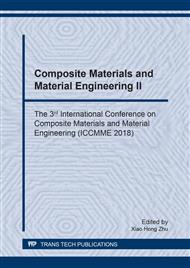p.100
p.106
p.113
p.123
p.133
p.139
p.144
p.150
p.156
Viscosity Testing of Plastic Material PA6 with 15% of Glass Fibers
Abstract:
The main aim of this paper was to describe the viscosity and injection mold filling behavior of PA6 with 15% of glass fibers. Injection molding is one of the most widely used processes for polymer products. The quality of these products is directly linked to correct choice of process parameters. It is necessary to understand the filling behavior of the polymer material during the injection molding process. The spiral flow test was carried out in this study to explore the effects of several injection process parameters. The resulting lengths of spiral flow were compared. The polymer material under test was Polyamide 6 with 15% of short glass fibers (trade name: Durethan BKV 15). Virtual testing as well as real testing was performed. A predominantly linear relationship between the flow length and the mold temperature, melt temperature and injection pressure is described here. A special mold was designed for this test.
Info:
Periodical:
Pages:
133-138
Citation:
Online since:
August 2018
Authors:
Keywords:
Price:
Сopyright:
© 2018 Trans Tech Publications Ltd. All Rights Reserved
Share:
Citation:


